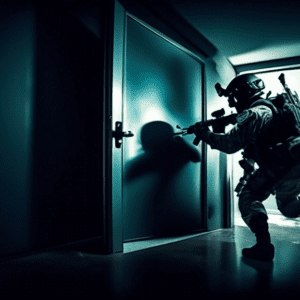Hostage Rescue: A Look Through the Lens of a Helmet Cam
The grainy footage flickers across the screen, the shaky handheld perspective immediately immersing the viewer in a high-stakes scenario. It’s not a scene from an action movie, but actual footage captured on a police officer’s helmet camera during a hostage rescue operation. This real-life, first-person perspective offers a chillingly authentic glimpse into the danger, precision, and bravery involved in these life-or-death situations.
The Rise of Helmet Cam Footage
Helmet cameras, initially popular amongst extreme sports enthusiasts, have become invaluable tools for law enforcement agencies worldwide. These compact, durable devices provide objective records of police interactions, offering transparency and accountability. However, the footage they capture often goes beyond routine procedures, documenting dramatic events like car chases, officer-involved shootings, and increasingly, hostage rescue operations.
The release of such footage, often blurred or redacted to protect the identities of those involved, serves several purposes. Firstly, it allows the public to understand the challenges faced by law enforcement officers in high-pressure environments. Secondly, it provides valuable training material for police departments, allowing them to analyze tactics, identify areas for improvement, and ultimately, save more lives. Lastly, the chilling reality captured in these videos serves as a stark reminder of the human cost of crime and the bravery of those who put their lives on the line to protect others.
Dissecting a Hostage Situation: Phases and Tactics
Hostage situations are dynamic and volatile, requiring a highly coordinated response from law enforcement. While each case is unique, most follow a general pattern, with distinct phases dictating the actions of the responding officers.
Phase 1: Containment and Assessment
The initial moments of a hostage situation are critical. The first responders on the scene are tasked with establishing a perimeter, containing the threat, and gathering as much information as possible. This includes:
- Identifying the hostage-taker(s) and determining their motives.
- Assessing the number and condition of the hostages.
- Establishing communication with the hostage-taker, if possible.
Helmet cam footage from this phase often shows officers moving with urgency but controlled determination. The audio may capture frantic calls for backup, the securing of the perimeter, and the initial attempts to establish communication with the suspect.
Phase 2: Negotiation and De-escalation
With the situation contained, trained negotiators take the lead. Their primary objective is to de-escalate the situation through dialogue, build rapport with the hostage-taker, and ultimately secure the safe release of the hostages. This phase can be tense and drawn-out, requiring patience, empathy, and a deep understanding of crisis psychology.
Helmet cam footage from this phase may be less action-packed but equally riveting. The camera might capture the negotiator’s calm demeanor as they speak through a loudspeaker or the anxious faces of officers standing guard, ever vigilant for any signs of escalation.
Phase 3: Tactical Intervention
While negotiation is always the preferred outcome, there are situations where a tactical intervention becomes necessary. This could be due to an imminent threat to the hostages’ lives, the failure of negotiations, or the hostage-taker’s increasingly erratic behavior.
When a tactical assault is authorized, specialized units, often equipped with helmet cameras, take center stage. The footage they capture is often the most intense, offering a visceral and unflinching look at the realities of close-quarter combat.
Through the lens of a helmet cam, viewers might witness:
- The methodical breaching of a building, using explosives or battering rams.
- The tense room-to-room clearing, officers moving with precision and speed.
- The decisive moment of contact, with the suspect apprehended and hostages secured.
The Aftermath and the Psychological Toll
The successful resolution of a hostage situation is a cause for relief, but it also marks the beginning of a long healing process for everyone involved. Hostages may suffer from post-traumatic stress disorder (PTSD), requiring extensive therapy and support. Similarly, the officers who put their lives on the line carry the psychological weight of their experiences.
Helmet cam footage, while often graphic, can play a crucial role in the debriefing and healing process. It allows officers to review their actions, learn from the experience, and receive psychological support tailored to their specific ordeal.
The Future of Helmet Cam Footage in Hostage Situations
As technology continues to advance, so too will the role of helmet cameras in law enforcement. We can expect to see higher resolution footage, improved audio recording, and even real-time transmission capabilities, allowing incident commanders to monitor the situation as it unfolds.
However, the increased use of this technology also raises important ethical and privacy concerns. Striking a balance between transparency, accountability, and the privacy rights of all involved will be a crucial challenge in the years to come.
Conclusion
Helmet cam footage offers a unique and often unsettling perspective on hostage rescue operations. These recordings serve as a testament to the bravery of law enforcement officers, highlight the dangers they face, and provide valuable insights that can help save lives in future hostage situations. As technology evolves, this footage will continue to shape our understanding of these high-stakes events, fostering transparency, and reminding us of the human cost of crime and the unwavering courage of those who stand ready to confront it.


